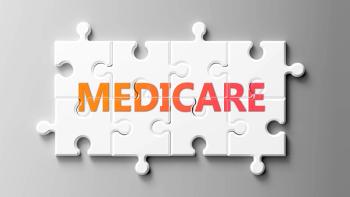
Understanding the Long-Term Implications of Medicaid Unwinding
It’s time to talk about the ramifications of pulling the rug out from the low-income and disabled individuals who rely on Medicaid’s basic healthcare services.
The current news cycle is filled with stories about
These efforts — largely based on consumer awareness campaigns — will absolutely prevent some people from losing their coverage. But they are not enough. With
What to expect if Medicaid is fully unwound
What’s especially challenging is that so many of the people who rely on these state programs aren’t even aware of what’s happening. They may not find out they have lost coverage until they show up at the pharmacy counter to pick up a medication and are told they’ll have to foot the entire bill because they are no longer insured.
I picked medications as an example because they present a powerful case study in just how hard it is to navigate our system. Most people assume that individuals who use prescription discounts like GoodRx at the pharmacy don’t have insurance, whether it’s from a commerical insurer or a public program like Medicaid.
However, the data show that the majority of those looking for financial support are, in fact, insured, but they still can’t afford their medications. In 2021,
Medications are just one way that Americans manage their health, and if they’re having trouble taking them as prescribed due to cost barriers — even when they have insurance — then imagine what the picture looks like for keeping up with primary and preventive care, or follow-through on referrals to specialists to manage chronic conditions. It’s not a pretty picture, and it becomes even darker when we focus on the Medicaid population. During the COVID-19 pandemic, when many more people enrolled in the Medicaid program, we saw great improvements in health outcomes. The thought of losing all of this progress is devastating.
Here are just a few of the potential consequences of taking away access to the program for these groups:
A huge percentage of the 8 to 24 million Americans currently at risk of losing Medicaid coverage will be forced to scramble to find alternative coverage and potentially live without it for a period of time, driving up the number of visits to emergency departments across the country.
The remaining impacted individuals will likely look to the ACA marketplace, straining an imperfect system already at capacity, and forcing individuals to make tough choices, like whether they should purchase insurance and medicine, or food, electricity and transportation.
As hospitals and health systems experience a resulting decrease in revenue, we’ll likely see more of these critical care centers close their doors.
As physicians, nurses and other health professionals are asked once again to do more with less after a years-long public health crisis caused by COVID-19, we’ll see an uptick in burnout and even more healthcare professionals leaving the field — or worse yet not entering it in the first place.
The list goes on and on. But rather than continue, I’d like to end with a question: Given our already poor health outcomes in the U.S., can we really afford to pull care from millions of vulnerable Americans?
Doug Hirsch is co-founder and chief mission officer of GoodRx.
Newsletter
Get the latest industry news, event updates, and more from Managed healthcare Executive.


















































